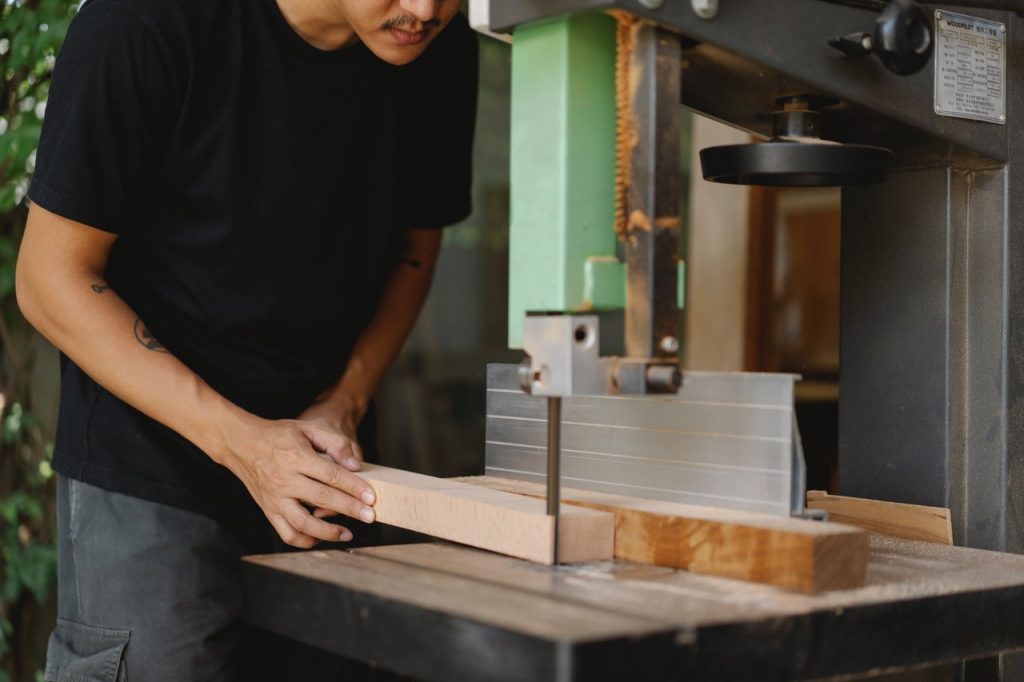Miter saws are incredible pieces of equipment but when working with smaller pieces of wood, complications can arise.
Most miter saws have a significant opening through the fence around the blade. This makes cutting smaller parts of wood safely quite difficult.
You don’t want minute pieces of timber flying around your workspace during cutting as that’s quite unsafe and definitely not recommended.
The solution to this would be to build a small fence around your miter saw’s blade that prevents those small pieces from flying out.
Quick Summary
In this post, we will discuss whether it’s a good idea to go through the effort to build a secondary fence around your miter saw.
We will also provide step-by-step instructions on how to build a secondary fence as well as a rundown of all the tools and supplies needed.
So without further ado, let’s get started.
How to Construct and Add a Miter Saw Fence (Step-by-Step Guide)
To properly construct and add a miter saw fence, please follow the step-by-step instructions provided below:
Step 1: Get hold of a piece of plywood that’s at least 7 inches wide. You can use either plywood or MDF for the base of your fence.
Step 2: Cut another piece that is 4 inches wide. Please note that the length for both of these pieces needs to be around 30 inches.
Step 3: Next, you need to join the two pieces of wood together.
This can be done with some super glue and some 2-inch brad nails.
You must make sure to mark the spots where the miter saw will cut the piece of wood. Avoid putting nails into these marked spots.
The last thing you want is your miter saw hitting a nail inside the wood.
Step 4: Drill pilot holes and make use of some 1-inch screws to clamp those pieces together.
It can be a good idea to use some ½-inch dowels to make sure that your secondary fence stays in place when you are gluing and screwing things into place.
They also make it much simpler for you to take the secondary fence off of your miter saw when it’s not in use.
Step 5: Make a precise cut at the exact center of your fence perpendicularly, i.e., at a 90-degree angle.
Step 6: We’re almost at the home stretch here.
Next, you need to drill ½-inch holes into the table below at 45 degrees (left), 90 degrees, and 45 degrees (right).
This will ensure that the ½-inch dowels will be accommodated with your miter saw.
That’s pretty much it. Now you have a secondary, sacrificial fence that will protect both you as well as your miter saw from dust, debris and small flying chunks of wood.
If you want the process to go smoothly make sure you have all the tools.
Do You Really Need a Secondary Fence?

Many people don’t want to go through the time and effort to build an additional, sacrificial fence for their miter saw.
Hence, we wanted to provide some of the major advantages you can have if you build one. Maybe after reading how much a sacrificial fence does for you, you’ll change your mind and decide to add one in.
Some great advantages of a secondary fence on a miter saw are:
- They’ll prevent small, fast-moving pieces of timber from flying out during cutting. These small projectiles can be extremely dangerous around your workspace if left unchecked.
- The secondary fences provided additional support during cutting.
- During cutting, an additional fence tremendously reduces the chances of a tearout
- An additional fence can become a great notepad. You can write small notes on it to remind yourself of tasks you have to perform during woodworking.
- A stop block can be added to the secondary fence for precise cutting.
- You can also mark up the next cut easily by lining it up against the point where the sacrificial fence ends.
- They help out a lot if you are making frames.
- They increase the accuracy of your miter saw when you are performing 90-degree straight cuts.
When you are making more complicated, angled cuts with your miter saw, a little additional support is always welcome.
We’ve provided the step-by-step details on how you can construct and add a secondary fence to your miter saw above.
If any of the advantages we’ve listed above seem useful to you, we highly suggest that you take the time someday and add a fence to your miter saw.
We highly recommend that you should do this if you regularly work with smaller pieces of wood.
If you don’t regularly do so, it’s understandable to not want to build a secondary fence for your miter saw. However, if you regularly work with smaller pieces, it can be highly unsafe for you to work without a secondary fence.
The wide gaps in the fence halves as well as the throat plate will cause these small cut pieces to go airborne.
Another even more dangerous thing that can happen is that if the blade “grabs” the workpiece, it will pull itself into these gaps and take your fingers along with it.
Hence, don’t take the risk if you regularly work with small pieces of wood. Get a secondary fence built and installed as soon as you possibly can.
Wrapping Things Up…
That’s pretty much all there is to it when it comes to building a miter saw fence.
The secondary fence is something that many people feel is overkill but I think we’ve made a good enough case for how such a fence can definitely be worth it.
We understand if you don’t want to have one simply because they do take a fair amount of time and effort to construct and add. However, we do suggest that you try to take some time out on a weekend to add it if you can.
You will almost immediately be able to tell the difference in ease of use and safety.
If you have any more questions or any confusion regarding the process, please reach out to us in the comments section below.
For more projects like this visit Tools Advisor Pro.

